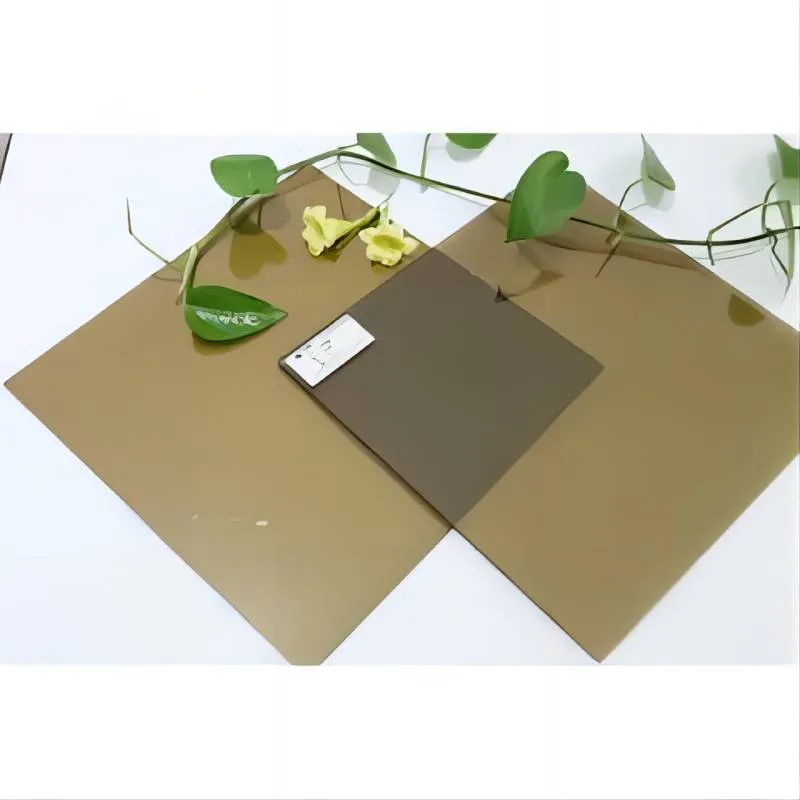Exploring Float Glass Designs A Fusion of Functionality and Aesthetics
Float glass, a type of flat glass made by the float process, has emerged as a cornerstone in contemporary architectural design and interior décor. This innovative production method not only yields high-quality glass with excellent optical clarity but also promotes a myriad of creative design possibilities. In this article, we delve into the unique characteristics of float glass, its applications in design, and the trends shaping its future.
Understanding Float Glass
Float glass is produced by pouring molten glass onto molten tin, allowing it to spread out and create a flat, smooth surface. This process results in uniform thickness and minimal distortion, making it ideal for applications where clarity and aesthetics are paramount. The smooth finish of float glass is particularly conducive to both functional and artistic designs, offering a perfect canvas for architectural innovation.
Applications in Architecture
In the realm of architecture, float glass plays a pivotal role in enhancing both the exterior and interior of buildings. Its transparency allows for the seamless blending of indoor and outdoor spaces, promoting natural light and creating an inviting atmosphere. Large glass facades have become a hallmark of modern buildings, reflecting the surroundings and reducing the barrier between the interior and exterior environment.
One of the most significant advantages of float glass is its versatility. It can be treated, colored, or coated to achieve various effects. For example, tinted float glass can reduce glare and enhance privacy without sacrificing natural light, making it a popular choice for residential and commercial properties. Additionally, float glass can be treated with various coatings to improve energy efficiency, reflecting heat and helping to maintain comfortable indoor temperatures.
Interior Design Innovations
Beyond external architecture, float glass finds extensive use in interior design. Its sleek appearance makes it an ideal material for furniture, such as coffee tables, shelves, and room dividers. The minimalist aesthetic of float glass enhances modern interior spaces, contributing to a clean, uncluttered look. Designers are continuously experimenting with unique applications, such as glass staircases and shower enclosures, which serve both functional and decorative purposes.
float glass designs
Moreover, float glass can be printed or etched with intricate designs, enabling personalized touches that elevate interior spaces. Custom glass panels are becoming increasingly popular, allowing for individualized designs that reflect the personality of the homeowner. From etched motifs to vibrant printed images, the possibilities are virtually limitless.
Environmental Considerations
As the demand for float glass continues to grow, environmental sustainability has become a focal point in the industry. Many manufacturers are adopting eco-friendly practices, such as sourcing materials responsibly and reducing energy consumption during production. Recyclability is another vital aspect of float glass, as it can be reused in new glass products without losing quality.
In addition, the development of energy-efficient glass technologies is gaining traction. Low-emissivity (Low-E) float glass, for instance, minimizes heat transfer, enhancing the energy efficiency of buildings. By incorporating such technologies into their designs, architects and builders can contribute to more sustainable built environments.
Emerging Trends
As we look to the future, several trends are shaping the evolution of float glass designs. Smart glass, which can change its opacity in response to environmental factors or user controls, is on the rise. This innovative technology adds functionality while maintaining the aesthetic appeal of float glass, offering dynamic solutions for modern architecture.
Another trend is the integration of float glass with other materials, such as wood or metal, to create striking contrasts and textures in design. The combination of glass with traditional materials adds depth and complexity to spaces, marrying modern techniques with classic aesthetics.
Conclusion
Float glass designs encapsulate the harmony between functionality and aesthetic appeal in the modern world. Whether in architecture or interior design, float glass remains a preferred choice for its versatility, clarity, and the unique character it brings to spaces. As technology advances and environmental considerations take center stage, the future of float glass designs promises even more innovative and sustainable solutions, making it a material to watch in the years to come. The fusion of art and science inherent in float glass continues to inspire designers, architects, and homeowners alike, allowing for creativity to flourish in every reflection.
 Afrikaans
Afrikaans  Albanian
Albanian  Amharic
Amharic  Arabic
Arabic  Armenian
Armenian  Azerbaijani
Azerbaijani  Basque
Basque  Belarusian
Belarusian  Bengali
Bengali  Bosnian
Bosnian  Bulgarian
Bulgarian  Catalan
Catalan  Cebuano
Cebuano  Corsican
Corsican  Croatian
Croatian  Czech
Czech  Danish
Danish  Dutch
Dutch  English
English  Esperanto
Esperanto  Estonian
Estonian  Finnish
Finnish  French
French  Frisian
Frisian  Galician
Galician  Georgian
Georgian  German
German  Greek
Greek  Gujarati
Gujarati  Haitian Creole
Haitian Creole  hausa
hausa  hawaiian
hawaiian  Hebrew
Hebrew  Hindi
Hindi  Miao
Miao  Hungarian
Hungarian  Icelandic
Icelandic  igbo
igbo  Indonesian
Indonesian  irish
irish  Italian
Italian  Japanese
Japanese  Javanese
Javanese  Kannada
Kannada  kazakh
kazakh  Khmer
Khmer  Rwandese
Rwandese  Korean
Korean  Kurdish
Kurdish  Kyrgyz
Kyrgyz  Lao
Lao  Latin
Latin  Latvian
Latvian  Lithuanian
Lithuanian  Luxembourgish
Luxembourgish  Macedonian
Macedonian  Malgashi
Malgashi  Malay
Malay  Malayalam
Malayalam  Maltese
Maltese  Maori
Maori  Marathi
Marathi  Mongolian
Mongolian  Myanmar
Myanmar  Nepali
Nepali  Norwegian
Norwegian  Norwegian
Norwegian  Occitan
Occitan  Pashto
Pashto  Persian
Persian  Polish
Polish  Portuguese
Portuguese  Punjabi
Punjabi  Romanian
Romanian  Russian
Russian  Samoan
Samoan  Scottish Gaelic
Scottish Gaelic  Serbian
Serbian  Sesotho
Sesotho  Shona
Shona  Sindhi
Sindhi  Sinhala
Sinhala  Slovak
Slovak  Slovenian
Slovenian  Somali
Somali  Spanish
Spanish  Sundanese
Sundanese  Swahili
Swahili  Swedish
Swedish  Tagalog
Tagalog  Tajik
Tajik  Tamil
Tamil  Tatar
Tatar  Telugu
Telugu  Thai
Thai  Turkish
Turkish  Turkmen
Turkmen  Ukrainian
Ukrainian  Urdu
Urdu  Uighur
Uighur  Uzbek
Uzbek  Vietnamese
Vietnamese  Welsh
Welsh  Bantu
Bantu  Yiddish
Yiddish  Yoruba
Yoruba  Zulu
Zulu 

